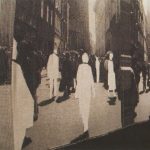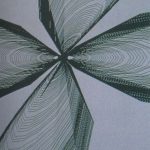Joanna Maria Berzowska
Most Recent Affiliation:
- Concordia University, Associate Professor
Location:
- Toronto, Ontario, Canada
Bio:
Joanna Maria Berzowska is Associate Professor of Design and Computation Arts at Concordia University in Montréal. She is the founder and research director of XS Labs, where her team develops innovative methods and applications in electronic textiles and responsive garments. Her work has been shown in the Cooper-Hewitt Design Museum in New York, the Victoria and Albert Museum in London, the Millenium Museum in Beijing, SIGGRAPH, ISEA, the Art Directors Club in New York, the Australian Museum in Sydney, NTT ICC in Tokyo, and the Ars Electronica Center in Linz, among others. She lectures internationally about electronic textiles and related social, cultural, aesthetic, and political issues.
A core component of her research involves the development of enabling methods, materials, and technologies — in the form of soft electronic circuits and composite fibers — as well as the exploration of the expressive potential of soft reactive structures. She is the Head of Electronic Textiles at OMsignal, a Montreal startup developing a line of bio-sensing clothes together with a wellness application.
Art Papers Chair:
Art Papers Jury Member:
Art Show Reviewer:
Art Works:
-

Krakow: a woven story of memory and eras...
Categories: [2D & Wall-Hung]
[SIGGRAPH 2006] -

Computational Expressionism
Categories: [Internet Art]
[SIGGRAPH 1999] -

SKORPIONS: Kinetic Electronic Garments
Categories: [3D & Sculpture]
[SIGGRAPH 2008]
Writings and Presentations:
-
Title:
Memory Rich Garments: Body-Based Displays
Writing Type: Paper
Author(s):
Exhibition: SIGGRAPH 2005: Threading Time
Abstract Summary:This paper describes conceptual and technical prototypes of reactive body-worn artifacts that display their history of use and communicate
[Download PDF]
physical (or embodied) memory. This work concentrates on garments that reflect more subtle, playful, or poetic aspects of our identity and
history. The pieces described here are part of a larger research project called Memory Rich Clothing. A variety of input and output methodologies are explored to sense and display traces of physical memory, raising the question: What exactly do we want to remember?
Title: Skorpions
Writing Type: Sketch / Art Talk
Author(s):
Exhibition: SIGGRAPH 2008: Slow Art
Abstract Summary:SKORPIONS are a collection of kinetic electronic garments that use the shape-memory alloy Nitinol to move and change on the body in slow, organic motions. They have anthropomorphic qualities and can be imagined as parasites that inhabit the skin of the host. They breathe and pulse, controlled by their own internal programming. They are living behavioral kinetic sculptures that exploit characteristics such as control, anticipation, and unpredictability.
SKORPIONS integrate electronic fabrics, soft electronic circuits, specially designed circuit boards, Nitinol, mechanical actuators such as magnets, and traditional textile construction technique. The cut of the pattern, the seams, and other construction details become an important component of engineering design. SKORPIONS are not interactive: their programming does not respond to sensor data. SKORPIONS shift and modulate personal and social space by imposing physical constraints on the body. They alter behavior, by hiding or revealing hidden layers, inviting others inside the protective shells of fabric, by erecting breathable walls, or tearing themselves open to divulge hidden secrets.
Role(s):




